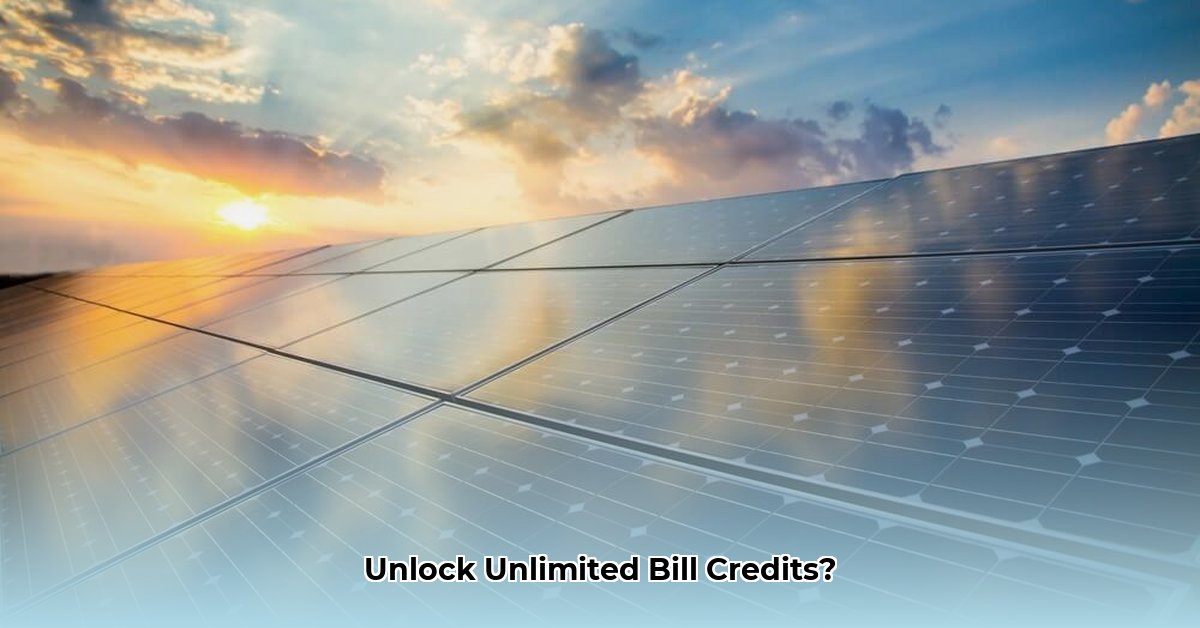Considering solar power in Texas? Direct Energy’s Solar Unlimited plan sounds amazing – unlimited bill credits! But is it too good to be true? This review provides a detailed analysis of Direct Energy’s solar plan, covering the benefits, drawbacks, and essential considerations. From installation to maximizing credits and potential pitfalls, this guide equips you with the knowledge to navigate the world of Direct Energy solar effectively. For information on solar energy credits in other states, check out this resource on California credits.
Direct Energy Solar: Unlimited Bill Credits – The Real Story
Is Direct Energy’s “Unlimited” plan a viable option for homeowners seeking to reduce their electricity bills through solar power? This section explores the details, advantages, and disadvantages of the plan, providing a step-by-step guide to help you determine if it’s the right fit, with a focus on strategic energy investment.
Understanding “Unlimited” Bill Credits for Solar Power
The core appeal of Direct Energy’s solar plan lies in its promise of “unlimited” bill credits for surplus solar power. While this sounds appealing, it doesn’t equate to free electricity. Instead, if your solar panels generate more energy than you consume, you’ll receive credits on your bill for that excess energy. The goal is to significantly reduce or potentially eliminate your monthly electricity bill.
However, these credits are applied up to the amount of electricity you use during a billing cycle. You’re still responsible for your consumption, but the plan offers the potential for significant savings. Is this “unlimited” promise truly achievable for the average homeowner?
The Fine Print: Important Considerations Before Signing a Solar Contract
Despite the appeal of unlimited credits, several important factors should be considered. Credits may not appear immediately; it can take up to three billing cycles for them to be reflected on your bill after your system is operational. This delay, while not uncommon in the solar industry, should be factored into your financial planning. What are the implications of this delay for your initial budgeting?
Moreover, a meter upgrade may be necessary. Your local electricity provider (TDSP, such as Oncor or CenterPoint in Texas) might require an upgraded meter to manage the complexities of solar panel integration. These upgrades can incur costs that can impact your potential savings. Contacting your TDSP early in the process is crucial to understand potential requirements and associated expenses. What are the long-term implications of these upgrade costs on your overall return on investment?
Vivint Solar: Examining the Partnership
Direct Energy partners with Vivint Solar for panel installation, a collaboration that can influence your energy savings. This partnership simplifies the installation process, but understanding the specifics is crucial. The extent of collaboration and potential advantages or faster access for Vivint customers to the Direct Energy solar plan are areas that require further clarity. What level of integrated support can customers expect from this partnership?
Analyzing the Pros and Cons: A Balanced Perspective
To aid in your decision, here’s a comprehensive overview of the potential advantages and disadvantages:
Pros:
- Potential for Significant Savings: The primary advantage is the possibility of significantly reducing or eliminating monthly electricity bills.
- Price Stability: Direct Energy often offers fixed-rate electricity plans, providing certainty in a fluctuating energy market.
- User-Friendly App: A mobile app allows for easy tracking of energy usage and credit accumulation.
- Simplicity: The core concept of the plan is straightforward and easy to grasp.
Cons:
- Delayed Credits: A delay of up to three billing cycles in receiving credits is possible.
- Possible Meter Upgrade Costs: Potential costs associated with upgrading your electricity meter exist.
- Partnership Transparency: The relationship between Direct Energy and Vivint Solar lacks detailed clarity.
- Limited Availability: The plan is predominantly available in Texas.
Step-by-Step Guide to Solar Adoption
If you’re seriously considering Direct Energy Solar, follow this checklist:
Step 1: Consult Your Electricity Provider: Contact your TDSP to inquire about net metering policies and any necessary meter upgrades and their associated costs.
Step 2: Analyze Your Bills: Review your past electricity bills and compare your current energy expenses with projected savings from the Direct Energy plan, considering upfront and ongoing costs, including potential meter upgrades.
Step 3: Test the App: Download and explore the Direct Energy app to assess its ease of use and the level of detail it provides on energy usage and credits.
Step 4: Review the Contract: Carefully read the contract, including terms and conditions, payment schedules, and cancellation or renewal options.
Step 5: Stay Informed: Net metering regulations can change, so remain updated on any policy changes that might affect your solar investment.
Is Direct Energy Solar Right for You? Assess Your Energy Needs.
Direct Energy Solar’s “Unlimited” plan presents a potentially beneficial opportunity for Texas homeowners seeking to lower their energy bills. However, carefully weigh the potential benefits against complexities and potential costs. Thoroughly research, follow the steps outlined above, and base your decision on your unique circumstances and energy needs. Remember that while significant savings are possible, they are not guaranteed. What are your long-term energy efficiency objectives?
How to Maximize Solar Bill Credits with Direct Energy’s Solar Unlimited Plan in Texas
Strategic planning is essential to maximize bill credits with Direct Energy’s Solar Unlimited plan.
- A clear understanding of energy consumption and solar production is critical.
- Texas’s deregulated energy market impacts plan effectiveness, necessitating comparisons.
- Awareness of credit caps and potential rate fluctuations is important.
The Direct Energy Solar Unlimited plan in Texas offers homeowners a way to benefit financially from solar energy. This section explores how to optimize those bill credits.
Understanding Solar Energy Credits
The Solar Unlimited plan provides credits for surplus solar energy returned to the grid. While the concept is straightforward – you consume energy from the grid when needed and sell excess solar power back – the details significantly impact your savings.
Maximizing Credits: A Strategic Approach
1. Energy Audit and Planning: Conduct an energy audit to identify your household’s energy consumption patterns to determine the optimal system size. An undersized system won’t generate enough surplus energy, while an oversized system might exceed credit limits.
2. System Sizing: A balanced solar system produces enough energy to cover your usage and generate excess for credits without surpassing the plan’s capacity. Consult with a Direct Energy representative or installer.
3. Smart Energy Consumption: Shift energy-intensive activities (laundry, dishwashing) to daylight hours when solar power production peaks to reduce reliance on grid power during peak hours.
4. Monitoring and Adjustment: Use Direct Energy’s online portal to track energy consumption, solar production, and credit accumulation. Regularly review these metrics and adjust habits accordingly.
5. Plan Comparison: Research other solar providers in Texas to compare their plans and potentially find a better fit for your needs. Comprehensive analysis is key to success.
Direct Energy Solar Unlimited Plan: Pros & Cons related to green initiatives
Below is a table of pros and cons of the Direct Energy Solar Unlimited Plan, in terms of green initiatives.
| Pros | Cons |
|---|---|
| Potential for considerable bill credits | Credit caps may reduce potential returns. |
| Relatively simple application process | Buyback rates can change and affect overall savings. |
| Access to Direct Energy’s customer service network | Careful planning and energy monitoring are needed to maximize credit potential. |
| Usually provides a streamlined installation procedure. | Less competitive compared to other plans sometimes. |
| Reduce your carbon foot print | Requires the use of solar panels which can be expensive to install at initial cost |
| Reduced dependence on fossil fuels | |
| Potentially Increase property value |
Frequently Asked Questions (FAQs) for Texas Residents
Q: How does net metering work with Direct Energy Solar Unlimited?
A: Net metering allows you to receive credits on your electricity bill for the excess energy your solar panels send back to the grid. Direct Energy’s Solar Unlimited plan credits you at the same rate you pay for electricity.
Q: What happens to my solar credits at the end of the billing cycle?
A: Any excess credits typically roll over to the next billing cycle, but it’s important to confirm this with Direct Energy, as policies can change.
Q: Are there any hidden fees associated with the Direct Energy Solar Unlimited plan?
A: Always inquire about any potential fees, such as interconnection fees, meter upgrade costs, or early termination fees. Transparency is essential.
Q: Can I use 100% renewable energy with the Direct Energy Solar Unlimited plan?
A: While the plan supports renewable energy, it doesn’t guarantee 100% renewable energy, as you’re still connected to the grid. However, it greatly increases the percentage of renewable energy you use.
Q: How much energy can I save on average?
A: Savings vary based on your energy consumption, solar panel system size, and the amount of sunlight your location receives. An energy audit can provide a more accurate estimate.
By understanding the intricacies of the Direct Energy Solar Unlimited plan, you can make informed decisions and maximize your solar investment. It’s about more than just going solar; it’s about optimizing your energy strategy for long-term financial and environmental benefits.
- Hydro Extrusions USA Leads North American Aluminum Profile Solutions - December 28, 2025
- Hydro North America Leads Aluminum Extrusion Solutions Across Diverse Industries - December 27, 2025
- Hydro Extrusion North America Provides Custom Solutions Across Diverse - December 26, 2025
















